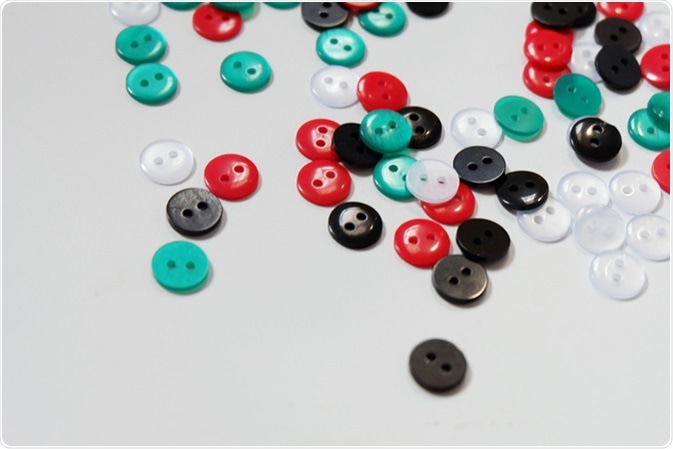Button phobia, also known as koumpounophobia, refers to the fear of buttons, which is surprisingly very common. Since button phobia is a kind of anxiety disorder, it is treated by psychotherapy and hypnotherapy.
Research has revealed that pharmacological treatment is not a choice for button phobia, but only psychological therapy is mandatory and effective. Some of the common methods of treatment for button phobia are directive psychotherapy, psychodynamic therapy, hypnotherapy and neurolinguistic programming.

Fear of Buttons Phobia – Koumpounophobia. Image Credit: Dwi Putri / Shutterstock
Directive Psychotherapy
In directive psychotherapy, the therapist directs the course of the therapy by intervening in asking questions and offers interpretations to patient’s conflict and feelings. There are different types of directive therapies available.
Behavioral therapy is a response-based therapy that supports an individual to acquire new positive behavior, which reduces several types of phobias including button phobia. It employs many techniques among which, flooding is generally recommended for koumpounophobia. Along with flooding, some relaxation techniques are also learned to achieve effective treatment.
Flooding is a commonly known as prolonged exposure treatment, and is found to be effective for phobias and anxiety. It aims to expose the sufferers to their feared object for a longer duration in a safe and controlled manner. For example, an individual afraid of buttons is exposed to a variety of buttons for a long duration, so that their fear toward the objects becomes less.
Cognitive behavioral therapy (commonly known as CBT)uncovers, understands, and then changes thoughts or dislikes that cause problems related to anxiety. Talking to the patient about what they think (cognition) affects the way they feel (behave). It tries to help the patient figure out why they are reacting in the way they do, in order to help them to change their thought patterns, or overcome their mental barriers.
Virtual Reality Exposure (VRE) therapy is also known as computerized CBT. Computer simulation is the latest technique used to expose the fear situation. The fear object can be exposed actually or made to imagine. For example, it allows a user to be an active participant within a computer generated three-dimensional virtual world. It helps to desensitize the patient toward the objects causing fear. Cognitive behavioral therapy does not suit all patients, because of the extra effort and work that need to be put into the treatment for the best results. However, many individuals believe in looking for a magical cure or miracles that may change them without too many sacrifices and efforts.
Thrive program for button phobia is a motivational program conducted by many psychological organizations. It involves many sessions in which a training course is provided to improve the quality, knowledge, as well as the interest to see the objects in a practical manner.
Psychodynamic Therapy and Psychoanalysis
Psychodynamic psychotherapy is a depth-oriented psychology that focuses on exposing the patient’s unconscious thoughts, and alleviates the fear. It significantly differs from a majority of other therapeutic approaches as it aims to achieve a deep-seated change in both emotional development and personality.
Similarly, psychoanalysis is a coordinated psychodynamic process. This therapy uncovers irrational anxious problems toward an object attained by a traumatic experience in childhood. These anxious problems cannot be discussed with anybody due to embarrassment and the feeling of shame. The psychoanalytical procedure is conducted in such an atmosphere where the patient can reveal their secret problems without any fear or shame. This therapy deals with the “repression” theory, which means the emotional experience in the unconscious part of the brain.
Other Forms of Treatment
Hypnotherapy, otherwise called suggestion therapy, this is used to treat minor problems including button phobia. The therapist enables the patient to achieve a relaxed state of mind and gives suggestions considering the symptoms of problems that the patient is facing. These suggestions make the patient to imagine themselves in a positive manner.
Neurolinguistic programming (NLP) provides techniques that enable a person to change the way that he/she thinks, view past events, and an approach to their life. It educates the sufferers on how to control their mind. NLP uses various techniques such as building rapport, anchoring, content re-framing, etc. To reprogram the mind, pursuing NLP techniques will help either to decrease or eradicate button phobia.
Further Reading